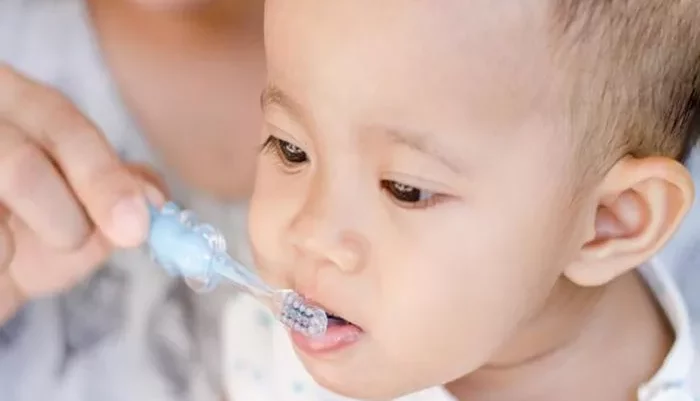Children’s oral health is a vital component of their overall well-being. As they grow and develop, their teeth and gums undergo significant changes, making them susceptible to various oral problems. At Palmetto Children’s Dentistry, we understand the importance of early detection and treatment of these issues to ensure children maintain healthy smiles throughout their lives. In this article, we will explore the 10 most common oral problems in children and provide insights into their causes, symptoms, and management strategies.
Dental Cavities
Dental cavities, also known as caries, are the most prevalent oral health issue among children. They occur when bacteria in the mouth break down food particles, producing acids that erode tooth enamel. Over time, this erosion leads to holes or cavities in the teeth.
Symptoms: Pain, sensitivity to cold or hot foods, visible holes or dark spots on teeth, and bad breath.
Prevention: Daily brushing with fluoride toothpaste, flossing, regular dental check-ups, and a balanced diet with limited sugary snacks and drinks.
Treatment: Depending on the severity, treatment options range from fillings to crowns and even tooth extractions in severe cases.
Gum Disease (Gingivitis)
Gingivitis is an inflammation of the gums caused by plaque buildup. While it is more common in adults, children can also develop it, especially if they do not maintain good oral hygiene.
Symptoms: Red, swollen, or bleeding gums, bad breath, and possible tooth sensitivity.
Prevention: Daily brushing and flossing to remove plaque, regular dental cleanings, and good overall health.
Treatment: Professional dental cleaning, improved oral hygiene habits, and in some cases, antibiotics.
Enamel Erosion
Enamel erosion occurs when the tooth enamel wears away due to acidic foods and drinks, vomiting, or certain medical conditions.
Symptoms: Tooth sensitivity, yellowing of teeth, and rough or worn-down tooth surfaces.
Prevention: Limiting acidic foods and drinks, using a straw when consuming acidic beverages, and prompt treatment of vomiting conditions.
Treatment: Restorative treatments such as bonding, veneers, or crowns may be necessary to repair damaged enamel.
Tooth Decay in Baby Teeth
Primary teeth, or baby teeth, are not exempt from decay. In fact, decay in baby teeth can lead to serious problems if left untreated, including pain, infection, and potential damage to permanent teeth.
Symptoms: Visible cavities, discoloration, and toothache.
Prevention: Regular brushing and flossing, avoiding sugary snacks and drinks, and dental check-ups.
Treatment: Fillings, crowns, or tooth extractions as needed.
Orthodontic Problems
Orthodontic issues, such as crooked teeth, overcrowding, and gaps, are common in children and can affect their bite, chewing function, and self-esteem.
Symptoms: Crooked or misaligned teeth, overlapping teeth, gaps between teeth, and difficulty chewing.
Prevention: Early orthodontic evaluations to identify and address problems before they worsen.
Treatment: Options include braces, retainers, and Invisalign for older children.
Tongue-Tied (Ankyloglossia)
Tongue-tied refers to a condition where the frenulum (the band of tissue under the tongue) is too short or tight, restricting tongue movement.
Symptoms: Difficulty feeding, speech problems, and discomfort.
Prevention: Early diagnosis and treatment can prevent complications.
Treatment: Surgical release of the frenulum (frenectomy) if necessary, followed by speech therapy.
Teething Problems
Teething is a normal process where baby teeth erupt through the gums, but it can cause discomfort and irritability for children.
Symptoms: Drooling, chewing on objects, irritability, and mild fever.
Prevention: Teething rings and gentle gum massage can provide relief.
Treatment: Over-the-counter teething gels or pain relievers may help alleviate discomfort.
Lip and Tongue Habits
Habits such as thumb sucking, pacifier use, and tongue thrusting can affect the alignment of teeth and jaw development.
Symptoms: Misaligned teeth, open bites, and speech problems.
Prevention: Early intervention and encouragement to stop harmful habits.
Treatment: Orthodontic treatment and speech therapy as needed.
Dental Trauma
Children are prone to dental trauma, such as falls, sports injuries, and accidents.
Symptoms: Pain, bleeding, tooth avulsion (knocked-out tooth), or tooth fracture.
Prevention: Wearing protective gear during sports and supervising children during play.
Treatment: Immediate dental care to save the tooth or manage the injury, including reattachment of avulsed teeth, filling fractures, or splinting loose teeth.
Mouth Breathing
Mouth breathing can lead to dry mouth, increased risk of cavities, and jaw development issues.
Symptoms: Dry lips and mouth, frequent throat clearing, and difficulty breathing through the nose.
Prevention: Addressing underlying causes such as allergies, large tonsils, or nasal obstructions.
Treatment: Orthodontic treatment, allergy management, or surgical interventions to correct nasal obstructions.
Conclusion
At Palmetto Children’s Dentistry, we understand that children’s oral health is a complex and evolving field. By recognizing and addressing these 10 common oral problems in children, we can help them maintain healthy smiles and prevent future complications. Regular dental check-ups, good oral hygiene habits, and early intervention are key to ensuring children’s oral health remains on track. Remember, a healthy smile starts with proactive care and attention to detail.
Related topics:

